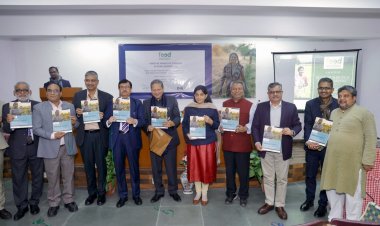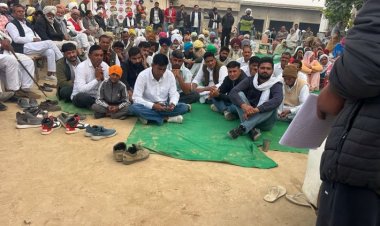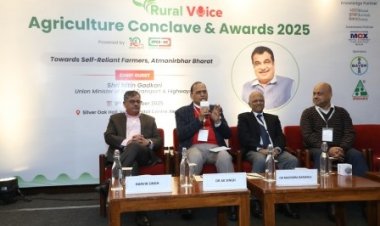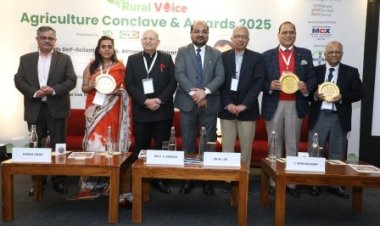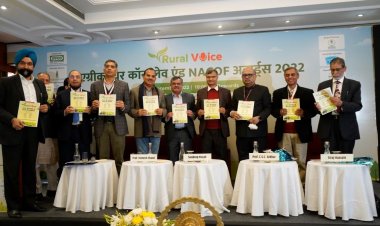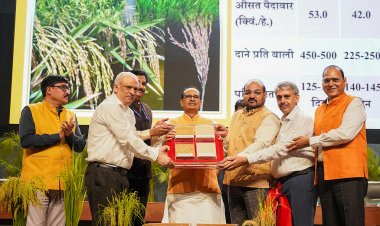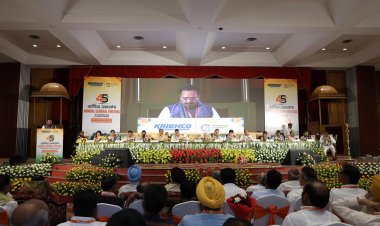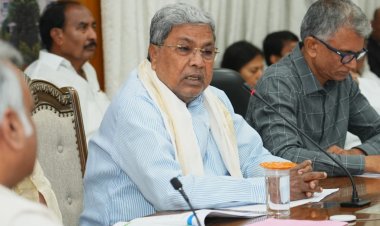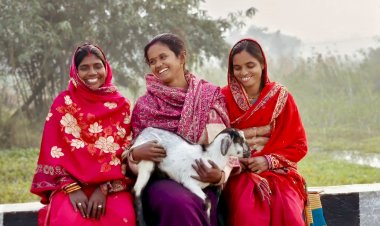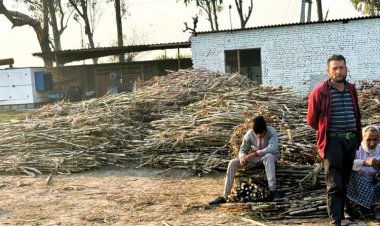IAAG recommends how to transform agricultural education in India
In a letter to Prime Minister Narendra Modi, IAAG International, the newly formed group of more than sixty eminent agricultural scientists, professionals, education- and policy-related experts, both from India and abroad, has introduced itself and recommended the way forward to “Reengineering India’s Agricultural Education” in line with NEP 2020. It has also offered to extend whatever support is necessary.
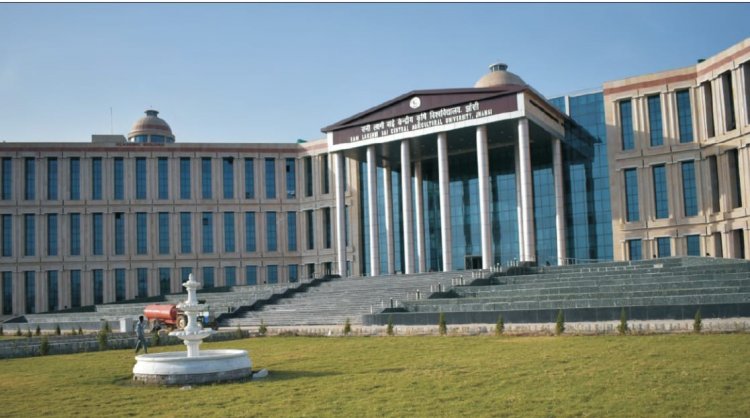
The National Education Policy (NEP) 2020 has kindled some hope that the government is serious about giving education in India a new shape. The NEP is holistic, inclusive, flexible, and multidisciplinary. It will enable the next generations to become globally competitive and competent to face the challenges of 21st century successfully.
In this context, recently more than sixty eminent agricultural scientists, professionals, education- and policy-related experts, both from India and abroad, representing the newly formed “India Agriculture Advancement Group International (IAAG)”, discussed in an international webinar held on July 15 the need for reorientation of and reforms in India’s agricultural education system in order to make it relevant, more efficient and effective in line with NEP.
Subsequently, on August 27, Ramesh Deshpande, Convenor, IAAG International, wrote a letter to Prime Minister Narendra Modi to introduce this newly formed group and recommend the way forward to “Reengineering India’s Agricultural Education”. The letter said the reforms suggested were critical to realize the Prime Minister’s “dream of transforming India into a global knowledge power – the Vishwa Guru”.
What is wrong with India’s Agricultural Education System?
India’s Agricultural Education System now comprises 73 agricultural universities — state agricultural universities or SAUs (62), deemed universities (5), central agricultural universities (2) and central universities with agricultural faculty (4). As we can see, the system is dominated by SAUs. Unfortunately, the SAUs have become a fertile ground for mediocrity.
From around the early 1990s, when the Green Revolution began to wane and agricultural growth became sluggish, the SAU system also started facing a range of challenges in areas such as (a) Governance (with little or no autonomy to Vice Chancellors), exacerbated by frequent interventions by government officials and politicians; (b) Lack of meritocracy in education; (c) Limited National-State coordination; (c) Fragmentation and disconnects among research, extension and education; (d) Inadequate investment and imbalance in resource allocation, together with a lack of reforms and slow or no implementation of adopted reforms; and above all, (e) Outdated curricula and infrastructure and almost little and zero accountability of faculty performance in annual rewards or timebound promotions resulting in mediocrity in almost all SAUs.
The minutes of the webinar rightly say: “Once you bring mediocrity in higher education instead of excellence, (the) entire nation suffers in technology and science innovations.”
What the NEP does
The recently issued NEP talks little about agricultural education per se but does show the way to reform and reengineer India’s agricultural education system in conjunction with the systems for other branches of education, especially such that it can deliver high-quality higher education, with equity and inclusion.
The NEP Vision envisages, among other things, moving towards a higher educational system consisting of large, multi-disciplinary universities and colleges with at least one in or near every district, and with more HEIs across India that offer a medium of instruction or programs in local/Indian languages. It calls for faculty and institutional autonomy. It feels the need to revamp curriculum, pedagogy, assessment, and student support for enhanced student experiences.
Reaffirming the integrity of faculty and institutional leadership positions through merit appointments and career progression based on teaching, research, and service are among the measures suggested by the NEP. The new policy talks about establishing a National Research Foundation to fund outstanding peer-reviewed research and to actively seed research in universities and colleges. The Higher Education Institutions (HEIs) should be governed by highly qualified independent boards having academic and administrative autonomy. There should be “light but tight” regulation by a single regulator for higher education
What the IAAG recommends
The IAAG expresses its happiness that the Indian Council of Agricultural Research (ICAR) has already initiated the implementation of a number of recommendations contained in the NEP 2020 and plans to leverage the ongoing initiatives to reengineer the National Agricultural Higher Education System by internalizing most of the NEP provisions, in close collaboration with the Ministry of Education. ICAR is an autonomous organization under the Department of Agricultural Research and Education (DARE), Ministry of Agriculture and Farmers Welfare.
However, IAAG considers it critical at this juncture to bring certain important recommendations to the Prime Minister’s notice for their speedy implementation. One, the role and accountability of ICAR, the lead institution for agricultural education, should be explicitly defined and delineated under the NEP. There should be a strong ICAR/DARE system with the creation of an independent “National Agricultural Education Council” as an apex body to monitor, coordinate and have an oversight function at the national level.
Two, priority attention be urgently given to define the mechanisms and ways to initiate and integrate agricultural education in middle schools. Three, SAUs need to aim for excellence through: (a) diversifying and making the course curriculum more relevant and flexible, and (b) ensuring faculty to generate resources by competing for external grants thus reducing the dependence on public funds – a must indicator for judging the annual performance of teachers/researchers. Four, there is an urgency to create a “National Agricultural Research and Innovation Fund” with an initial allocation of Rs 1,000 crore under ICAR.
Five, the National Agricultural Research and Extension System (NARES) must integrate Science Social Responsibility with Corporate Social Responsibility, leading to effective public-private partnership (PPP). It must enhance the complementarity of ICAR institutes and SAUs in different agro-ecosystems to be more ‘vocal for local’ and to double the farmers’ income while meeting the Sustainable Development Goals (SDGs) by 2030. It must create a “National Mission on Youth” to motivate and attract youth (including women) in agriculture (MAYA) to become technology agents, extension service providers and successful entrepreneurs. And it must transform the Land Grant University System into world-class Multidisciplinary Education and Research Universities (MERU), with the needed flexibility for the entry-exit system and to embrace non-formal vocational education for needed professionalism and skill development in agriculture.
Six, the current World Bank-funded National Agricultural Higher Education Project (NAHEP) should be negotiated on priority by the Government of India to enter its next phase. Seven, both Central and State government budget allocations need to be enhanced substantially, if not doubled.
The letter concludes in its annexure that a concrete action plan needs to be developed by ICAR to implement these recommendations. And that “IAAG Intl will indeed be so happy to extend the needed support in whatever manner considered necessary.”



 Join the RuralVoice whatsapp group
Join the RuralVoice whatsapp group

















